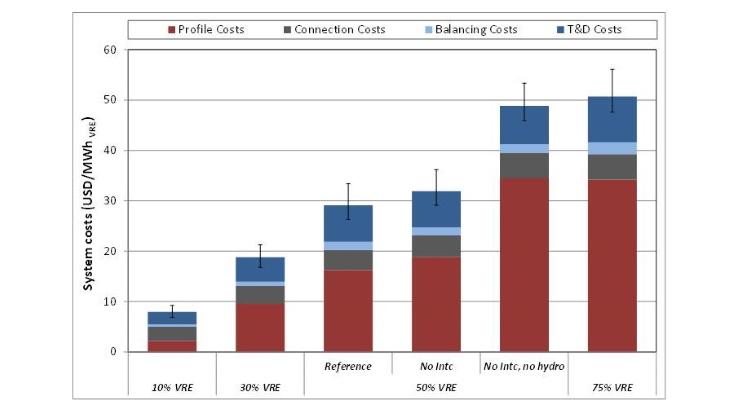Keppler presented a 2019 NEA study that assessed the total costs of achieving the low-carbon constraint of 50g of CO2 per kWh in the electric power sector of a representative OECD country. Meeting the 2015 Paris Agreement goals demands that the carbon intensity of the electric power sector is reduced to 50gCO2/kWh by 2050, or one-eighth of the current levels in OECD countries.
The study found that decarbonising the electricity sector in a cost-effective manner while maintaining high levels of electricity security requires five complementary policy measures:
- Recognise and allocate the system costs to the technologies that cause them;
- Implement carbon pricing, as the most efficient approach for decarbonising the electricity supply;
- Encourage new investment in all low-carbon technologies by providing stability for investors;
- Enable adequate levels of capacity and flexibility, as well as transmission and distribution infrastructure; and
- Develop truly competitive short-term markets for the cost efficient dispatch of resources.
"The pandemic and related policy responses underline the paramount importance of technically and economically robust electricity systems. As the world moved online, a stable electricity supply was as indispensable as food security or access to healthcare," Keppler said.
"The recovery plans strive to be green but they all have to contend with new financial constraints, so they’re aiming for an environmental, economic and social ‘triple dividend’. This will require least cost solutions for the low-carbon electricity systems of the future and a number of structural reforms in electricity markets. Low-carbon technologies, such as nuclear, variable renewables (VRE), hydro etc. as well as the related infrastructure all come with higher fixed costs of investment, which will require greater visibility for revenues, some changes in market design, and it also requires taking a system approach," he said.
A resilient electricity system that provides security of supply takes into account system effects (profile costs, balancing costs and transmission and distribution costs) which grow significantly as the share of VRE increases. Today, those costs are “barely considered in energy transition plans”, the Policy Brief notes, “mainly because they are an intrinsic part of the grid operation and cannot be easily allocated to a specific renewable generation plant”. However, they are tangible costs that will eventually have to be paid by the end-consumer or by the taxpayer, it adds.
A 2019 NEA study compared six different scenarios with different shares of fossil fuel, nuclear energy and renewable energies - in particular wind and solar photovoltaic (PV). It found that achieving the same low-carbon emissions with a larger contribution of nuclear generation makes the total cost of electricity for the end consumer or the taxpayer more affordable compared with a generation mix that relies on a large share of VRE.
“In fact, combining explicit targets for VRE technologies and a stringent limit on carbon emissions has important impacts on the composition of the generation mix and its cost,” the NEA says in the Policy Brief.
"First, the total installed generation capacity needed to meet the same demand increases significantly as the penetration of VRE generation increases. This is due to the variability and the lower load factors and capacity credit of VRE, which results in the need to install additional generation capacity to supply electricity when renewables are not running. For example, for a system with a VRE penetration level of 50% the total installed capacity would need to double, and for a system with a 75% VRE penetration level the installed capacity would need to be more than three times the peak demand."
Achieving the same low-carbon emissions with a higher mix of nuclear generation makes the total cost for the end consumer or taxpayer "much more affordable", it says, compared with a generation mix that relies on higher share of VRE.
The Policy Brief also refers to a recent Massachusetts Institute of Technology study that analysed the range of possible decarbonisation scenarios in the USA as a function of different sets of available low-carbon power generation technologies and of different carbon emission targets: from 400 to 1 g CO2/kWh.
"This study highlights that when nuclear power is excluded from the list of available low-carbon technology solutions, the average cost of electricity increases as the carbon constraint becomes more stringent,” it says. “Grids that benefit from appropriate shares of nuclear capacity operating in concert with renewables provide for a far more efficient system with less excess capacity and much lower overall cost of electricity," it adds.





_18570.jpg)
_16159.jpg)
_49205.jpg)
_18938.jpg)





